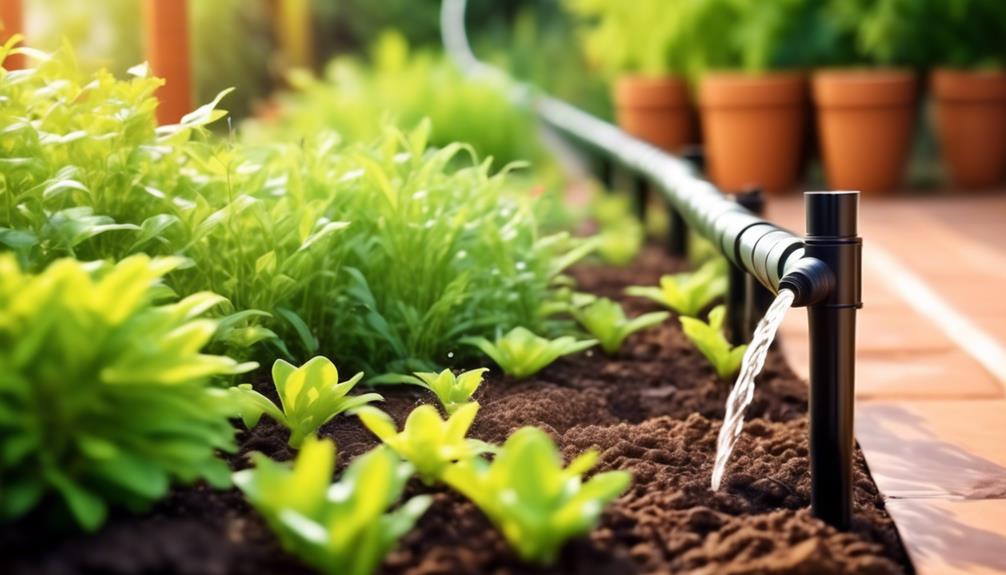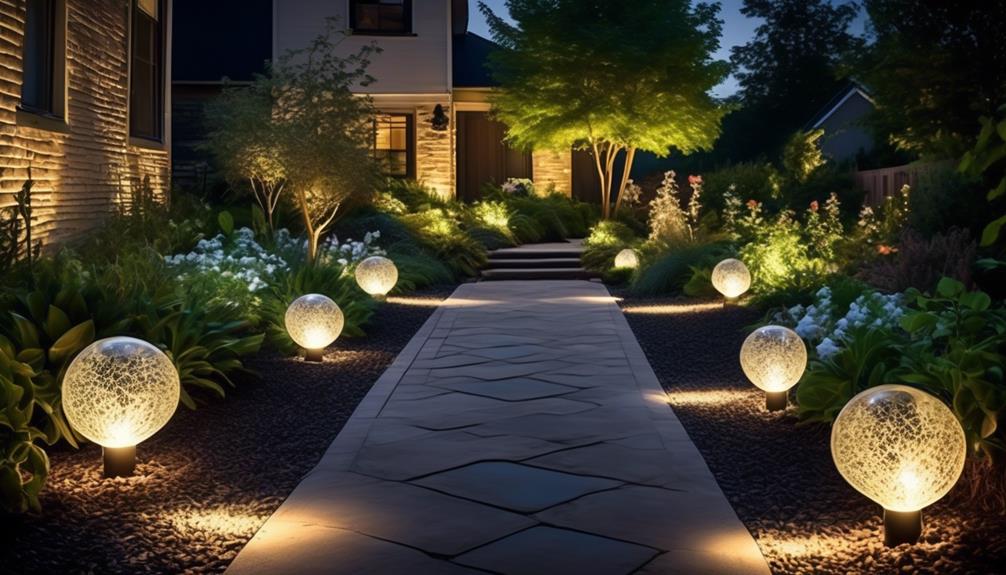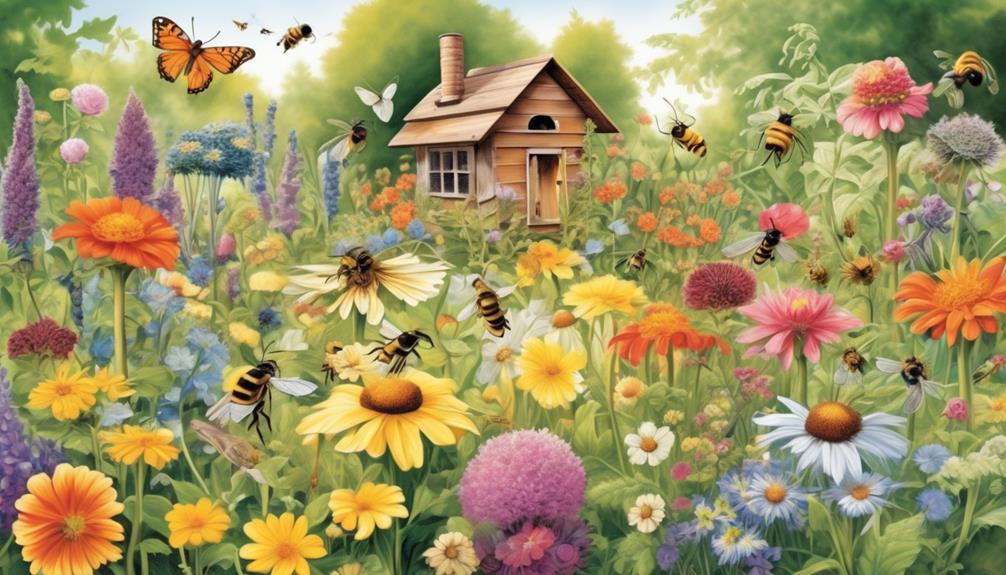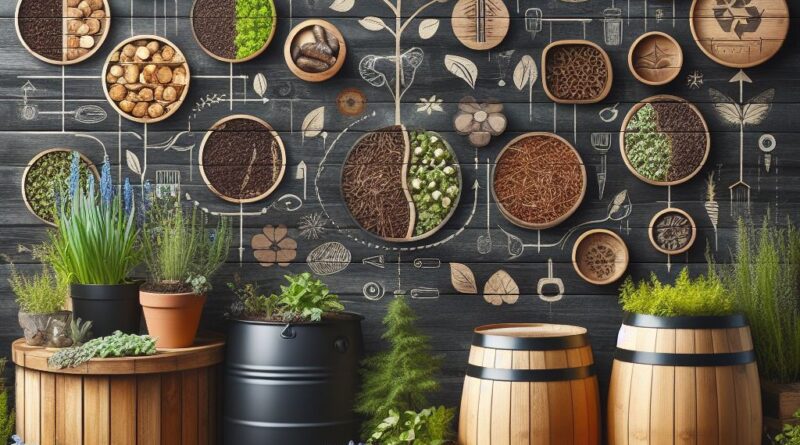Sustainable Landscaping: Eco-Friendly Practices and Materials
This post may contain affiliate links which means I may receive a commission for purchases made through links. As an Amazon Associate, I earn from qualifying purchases. Learn more on my Private Policy page.
Just like a well-tended garden blossoms with care and attention, sustainable landscaping practices and materials can help your outdoor space thrive in harmony with the environment. From water-efficient irrigation systems to natural pest control methods, there are numerous eco-conscious techniques and materials that can transform your garden into an environmentally friendly oasis.
By incorporating these practices, not only can you create a beautiful and vibrant landscape, but you can also contribute to a healthier planet. But how exactly can you implement these sustainable strategies in your own garden?
Keep reading to discover practical and innovative ways to elevate your outdoor space while minimizing your ecological footprint.
Water-Efficient Irrigation Systems

Consider using drip irrigation systems, which deliver water directly to the base of plants, minimizing waste and maximizing efficiency. When it comes to creating a water-efficient garden, incorporating drought-tolerant landscaping and water-wise gardening practices is essential. By choosing plants that are well-suited to your local climate and require minimal watering, you can significantly reduce water consumption in your garden. Additionally, implementing rainwater harvesting techniques can further enhance your sustainable landscaping efforts. By collecting and storing rainwater, you can utilize this natural resource to irrigate your garden, reducing the reliance on traditional water sources.
Smart irrigation systems, such as drip irrigation and rain sensors, can play a crucial role in promoting water efficiency. These systems allow for precise control over the amount of water delivered to your plants, ensuring that they receive just the right amount of moisture without wastage. With drip irrigation, water is directly applied to the root zone of plants, minimizing evaporation and runoff. This targeted approach not only conserves water but also promotes healthier plant growth by providing a consistent water supply to the roots.
Incorporating these water-efficient irrigation techniques into your landscaping not only benefits the environment but also offers long-term cost savings. By reducing water usage and promoting sustainable practices, you can create a beautiful and thriving garden while minimizing your environmental impact. Embracing water-wise gardening and utilizing innovative irrigation methods is a proactive step towards creating a more sustainable and eco-friendly outdoor space.
Native Plantings for Biodiversity
To further enhance your water-efficient garden, incorporate native plantings to promote biodiversity and ecological balance. By integrating native plants into your landscape, you can create a thriving wildlife habitat while conserving water resources. Native plants have evolved to thrive in specific regions and climates, making them well-adapted to local conditions and requiring minimal maintenance. Their deep root systems also help prevent soil erosion and promote water infiltration, contributing to the overall health of the ecosystem.
One of the key benefits of using native plantings is their ability to attract and support local wildlife. These plants provide essential food and shelter for birds, butterflies, and other pollinators, contributing to the overall biodiversity of your garden. Additionally, native plantings are often more drought-tolerant than non-native species, reducing the need for supplemental irrigation and conserving water in the process. This makes them an ideal choice for creating a sustainable and eco-friendly landscape that supports the local ecosystem.
When selecting native plants for your garden, consider incorporating a variety of species to support different wildlife and maximize biodiversity. Research the native plant species that are indigenous to your area and consult with local nurseries or botanical gardens for guidance on suitable options. By choosing native plantings with diverse blooming periods, you can ensure a continuous food source for pollinators throughout the seasons.
Ultimately, integrating native plantings into your landscape not only enhances its ecological value but also contributes to the overall health and resilience of the surrounding environment.
Recycled and Upcycled Materials

Incorporate recycled and upcycled materials into your landscaping to reduce waste and promote sustainability. Creative repurposing of materials not only adds a unique touch to your garden but also helps in reducing the environmental impact.
You can use old wooden pallets to create raised planters or a vertical garden, giving a second life to what would have otherwise been discarded. Upcycled decor, such as using old tires as planters or turning mason jars into lanterns, adds a personal and eco-friendly touch to your outdoor space.
When it comes to hardscaping, consider using reclaimed bricks or stones for pathways and patios. These materials not only lend a rustic charm to your landscape but also prevent them from ending up in landfills. Incorporating salvaged materials into your landscaping not only reduces the demand for new resources but also showcases your commitment to sustainability.
Old furniture can find a new purpose in your garden with a little creativity. Transform an old bench into a charming focal point, or repurpose a ladder as a plant stand. By reimagining and reusing these items, you not only reduce waste but also add character to your outdoor space.
Organic and Sustainable Soil Amendments
When seeking to enrich your sustainable garden with organic and sustainable soil amendments, look to repurpose organic materials in a manner that enhances the vitality of your landscape. By employing eco-conscious practices and materials, you can foster a thriving garden while minimizing environmental impact.
Here are some key points to consider:
- Composting Benefits
- Decreases waste: Embracing composting reduces the amount of organic waste that ends up in landfills, contributing to a healthier environment.
- Nutrient-rich soil: Compost enriches the soil with essential nutrients, fostering robust plant growth and overall garden vitality.
- Reduced water usage: The organic matter in compost helps the soil retain moisture, reducing the need for excessive watering and promoting water conservation.
- Organic Fertilizer Options
- Sustainable sourcing: Opt for organic fertilizers made from natural, renewable sources that support sustainable agricultural practices.
- Soil health: Utilizing organic fertilizers promotes long-term soil health by nourishing the soil without the use of harsh synthetic chemicals.
- Environmental impact: By choosing organic fertilizers, you contribute to reducing water and air pollution, safeguarding the ecosystem.
Incorporating these practices into your gardening routine not only benefits your immediate surroundings but also contributes to the larger goal of environmental sustainability. Embrace these organic and sustainable soil amendments to create a landscape that flourishes in harmony with nature.
Energy-Efficient Outdoor Lighting

Consider using LED lights to illuminate your outdoor spaces, as they provide energy-efficient and long-lasting lighting solutions. LED lighting is a sustainable choice for outdoor landscapes, offering numerous benefits for eco-conscious homeowners. These lights consume significantly less energy than traditional incandescent or halogen bulbs, helping to reduce your carbon footprint and energy costs. Additionally, LED lights have an impressive lifespan, lasting up to 25 times longer than traditional bulbs, reducing the frequency of replacements and minimizing waste.
Incorporating solar-powered LED lights into your outdoor lighting design can further enhance the sustainability of your landscape. Solar-powered fixtures harness energy from the sun during the day, storing it in rechargeable batteries to power the lights at night. This renewable energy source not only reduces electricity consumption but also contributes to a greener environment. By utilizing solar power, you can illuminate your garden, pathways, and outdoor living areas without relying on traditional grid electricity, promoting a more sustainable and environmentally friendly outdoor lighting solution.
When designing your outdoor lighting plan, consider strategic placement of LED fixtures to maximize their efficiency. Opt for low-voltage LED lights to minimize energy usage and ensure that they’re dark sky compliant to prevent light pollution and protect the natural nighttime environment. By integrating LED lighting and solar power into your outdoor landscape, you can create a beautifully illuminated space while reducing your environmental impact and energy consumption.
Permeable Hardscaping Options
Permeable hardscaping options offer a sustainable solution for managing stormwater runoff in your outdoor landscape. By incorporating these options into your garden, you can reduce the impact of heavy rainfall and contribute to a healthier environment.
Here’s why permeable hardscaping is the way to go:
- Preserve Nature’s Balance: Permeable hardscaping allows rainwater to seep into the ground, replenishing groundwater and supporting the natural water cycle. By choosing these options, you’re actively participating in the preservation of the environment, ensuring that the delicate balance of nature is maintained.
- Embrace Sustainability: Embracing permeable hardscaping options aligns with your commitment to sustainability. It’s a tangible way to demonstrate your dedication to eco-friendly practices, making a positive impact on the environment for future generations.
- Enhance Your Garden’s Appeal: Implementing permeable hardscaping options enhances the visual appeal of your garden while also serving an essential environmental purpose. It creates a beautiful, functional space that reflects your conscientious approach to landscaping.
Incorporating rainwater harvesting and green infrastructure into your permeable hardscaping design further amplifies the positive impact on the environment. By capturing rainwater for later use and integrating green infrastructure elements, such as bioswales and green roofs, you’re actively contributing to sustainable water management and environmental conservation.
Choose permeable hardscaping options to transform your outdoor space into a sustainable and eco-conscious landscape.
Natural Pest Control Methods

By incorporating sustainable landscaping practices, such as permeable hardscaping options, you can also implement natural pest control methods to maintain a healthy and balanced outdoor environment.
Companion planting is a great way to naturally deter pests from your garden. By interplanting certain species together, you can create a natural ecosystem that repels pests. For example, planting marigolds alongside vegetables can help repel nematodes and other harmful insects.
Additionally, attracting beneficial insects like ladybugs, lacewings, and parasitic wasps can help keep pest populations in check. These beneficial insects prey on common garden pests, providing a natural form of pest control.
DIY repellents are another effective natural pest control method. Simple mixtures using ingredients like garlic, neem oil, or hot pepper can be sprayed on plants to deter pests. These natural repellents are eco-friendly and safe for the environment.
Trap crops are also a clever way to protect your main crops from pests. By planting specific crops that pests are particularly attracted to, you can draw them away from your main plants. For instance, planting radishes to attract flea beetles can help protect your more valuable crops from these pests.
Eco-Friendly Lawn Care Practices
Looking to maintain a healthy lawn while minimizing your environmental impact? Implementing eco-friendly lawn care practices not only helps in preserving the environment but also creates a safer space for your family and pets.
By incorporating green landscaping techniques and eco lawn care strategies, you can achieve a lush, vibrant lawn without harming the ecosystem. Here are some tips to help you make your lawn care routine more eco-friendly:
- Opt for Organic Fertilizers: Using natural fertilizers like compost or organic options reduces chemical runoff into waterways, protecting aquatic life and maintaining water quality.
- Embrace Sustainable Mowing Practices: Adjust your lawnmower to a higher setting to promote grass growth and retain moisture, reducing the need for excessive watering. This also helps in preventing soil erosion and promotes healthier root systems.
- Encourage Biodiversity: Introduce a variety of native plants and wildflowers to your lawn, creating a diverse ecosystem that supports pollinators and beneficial insects. This not only adds natural beauty to your landscape but also contributes to the overall health of the environment.
Frequently Asked Questions
How Can Sustainable Landscaping Practices Contribute to Reducing Carbon Emissions and Combating Climate Change?
You can reduce emissions and mitigate climate change through sustainable landscaping practices. By incorporating eco-friendly materials and design integration, landscaping can act as an art that benefits the environment and contributes to a healthier planet.
What Are Some Innovative Ways to Incorporate Art and Design Into Eco-Friendly Landscaping Projects?
Incorporate innovative art and sustainable design into your landscaping projects. Use eco-friendly materials and create artistic, environmentally conscious designs. Embrace creativity while promoting sustainability in your outdoor spaces.
Are There Any Specific Certifications or Qualifications to Look for When Hiring a Landscaping Company That Specializes in Sustainable Practices?
When hiring a landscaping company for sustainable practices, look for green certifications and qualifications. Ensure they have sustainable landscaping expertise and experience to guarantee environmentally friendly results for your garden.
What Are Some of the Potential Cost Savings Associated With Implementing Eco-Conscious Landscaping Techniques and Materials?
When you implement eco-conscious landscaping techniques and materials, you can enjoy cost savings over time. These practices reduce water usage, lower maintenance needs, and contribute positively to the environment, making it a win-win for your wallet and the planet.
How Can Homeowners Actively Participate in the Maintenance and Upkeep of Their Eco-Friendly Gardens to Ensure Long-Term Sustainability?
To maintain an eco-friendly garden, you’ll need to stay involved in garden maintenance. Regularly tend to your plants, compost, and water mindfully. Implement sustainable practices like mulching and natural pest control for long-term sustainability and a beautiful, eco-conscious garden.
Conclusion
In conclusion, choosing sustainable landscaping practices and materials is a great way to create an eco-friendly garden that benefits the environment.
By using water-efficient irrigation systems, native plantings, recycled materials, organic soil amendments, energy-efficient outdoor lighting, permeable hardscaping, natural pest control methods, and eco-friendly lawn care practices, you can reduce your environmental impact and create a beautiful, sustainable outdoor space.
Make a positive difference for the planet with your landscaping choices!
